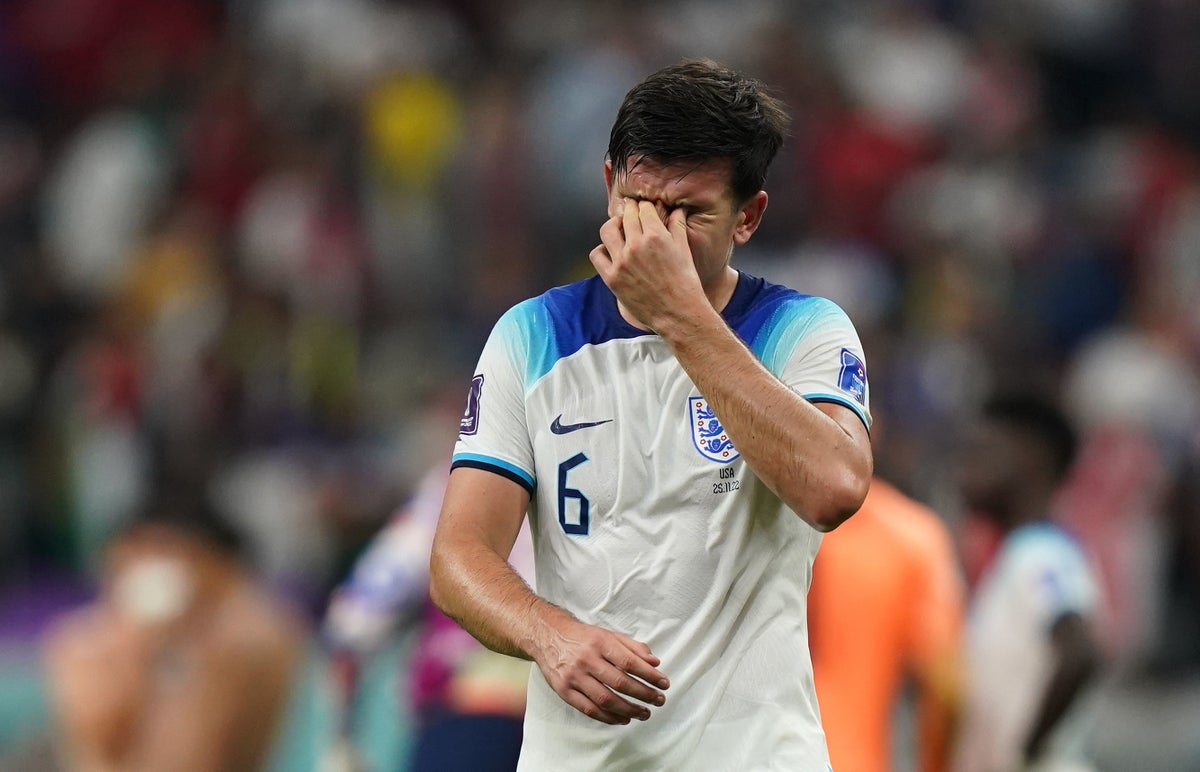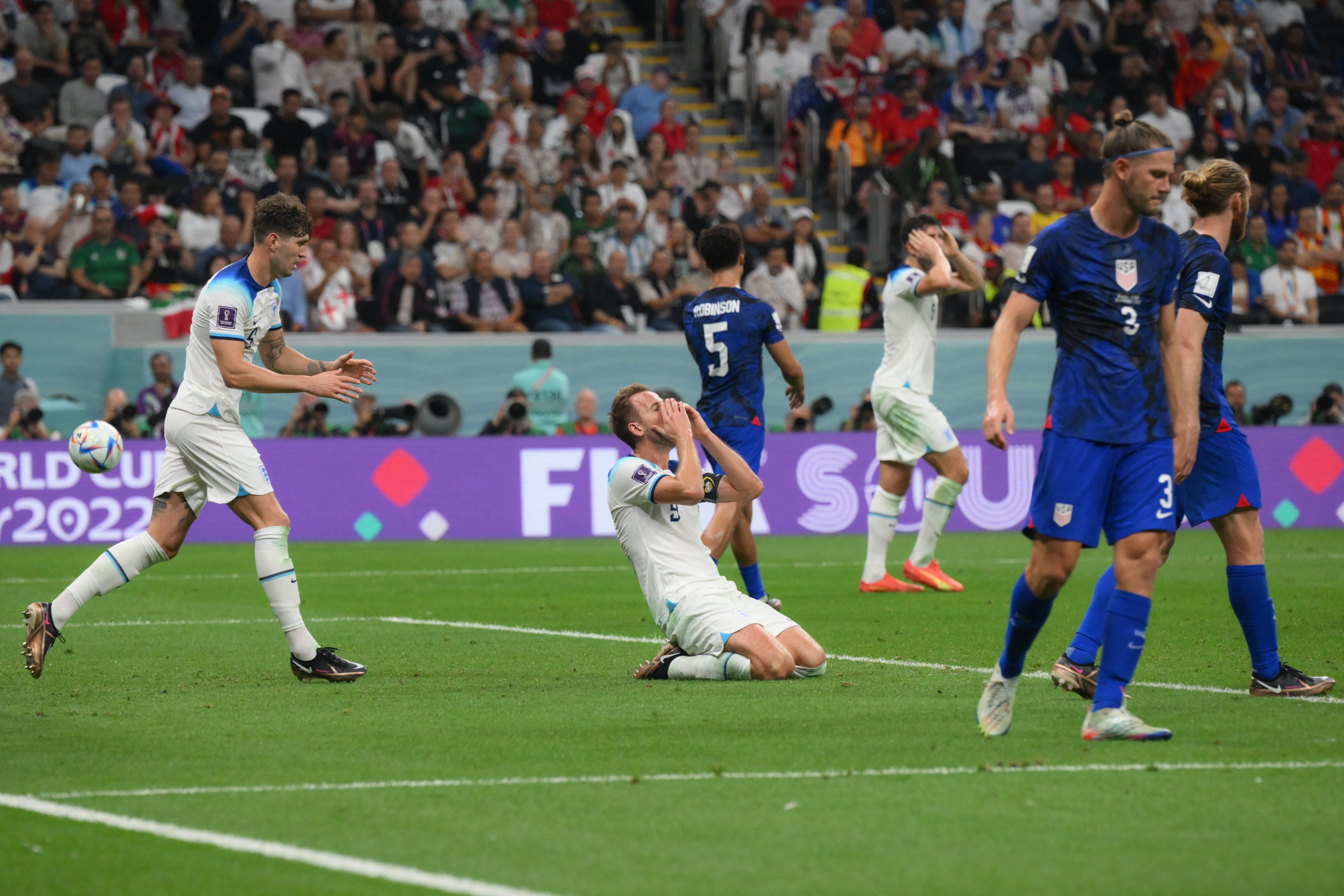
I believe that that was bad. Not Nice bad. Not Cape Town bad. Certainly not Belo Horizonte in 1950 bad. But be in no doubt, after the fluidity and free-scoring of Monday’s opening game and the hope that England’s struggles since the turn of the year could be behind them, this was a return to stodgy, uninspired, set-piece reliant fare that has pockmarked the Gareth Southgate era, and it was bad.
Southgate warned that this would be a very different game compared to Iran. He was right about that. But he also predicted that it would be played at “100 mph” and that his players would have to be at it from the first whistle. If that was the type of contest he was expecting, he expected wrong, and perhaps that misreading of the challenge that the United States posed was at the root of England’s below-par performance.
Long passages of the first half resembled the vision of this sport from the States’ most popular and successful cultural export. Halfback passed to centre, back to wing, back to centre, centre held it. Held it. Held it. John Stones ended the first half with the most touches of any player on the pitch, while Harry Maguire and Kieran Trippier were not too far behind. England’s build-up did not get off the ground floor.
A bright start – with Kieran Trippier regularly finding avenues for Bukayo Saka to attack down the States’ left – devolved into a slow, ponderous performance. Jude Bellingham, so impressive against Iran, regularly found himself crowded out, suffocating England’s progression through midfield. The United States ended the first half and started the second as the stronger of the two sides.
The momentum only shifted when Southgate elected to make a substitution. Jordan Henderson was joined by Jack Grealish, whose tendency to square up against opponents and change the pace of play offered something that England’s frantic, wasteful play in the final third had missed. It was not enough, though, and arguably too late in the day to fully affect things anyway.
It was, in one way, remarkable that Southgate waited 68 minutes before making a change of personnel given how poorly England were playing. And yet at the same time, it was entirely unsurprising. A reluctance to change things early has been a pattern throughout his time in charge. This was simply a repeat of some of the most frustrating nights of the Southgate era, when quicker thinking on the touchline may have affected the result.
The first change in the 2018 World Cup semi-final came in only the 74th minute, shortly after Croatia had scored but long after they had began to build momentum. It was a similar story in the European Championship final, when Southgate reacted quickly to Leonardo Bonucci’s equaliser but not to Italy’s mounting pressure, waiting until the 70th minute for his first switch. Henderson was also brought on that night, only to be brought off again in extra time.

It is not as though he does not rate those that he has in reserve, as his willingness to switch systems from game-to-game demonstrates, but among the many bogus criticisms of his tactical acumen, the questions which are repeatedly asked of his in-game management continue to be the most valid.
At the same time, a draw is not a terrible result. The United States were this group’s second seeds and a win against Wales would see England comfortably top the group. There are parallels to be drawn with the second game of the Euro 2020 group stage against Scotland – another goalless draw – when a similar performance was met with a wave of criticism, then entirely forgotten when it was followed by a win.
Yet with Wales needing victory on Tuesday themselves in order to have any hope of staying at the tournament, there will be a level of intensity to that occasion that England will need to match. They came nowhere near close to it at the Al Bayt, in a result that is far from a disaster, but with a performance that will be remembered as one of the more underwhelming major tournament displays under Southgate.







